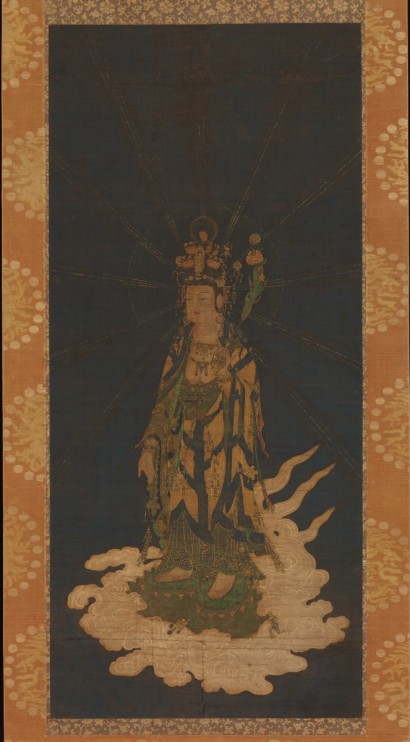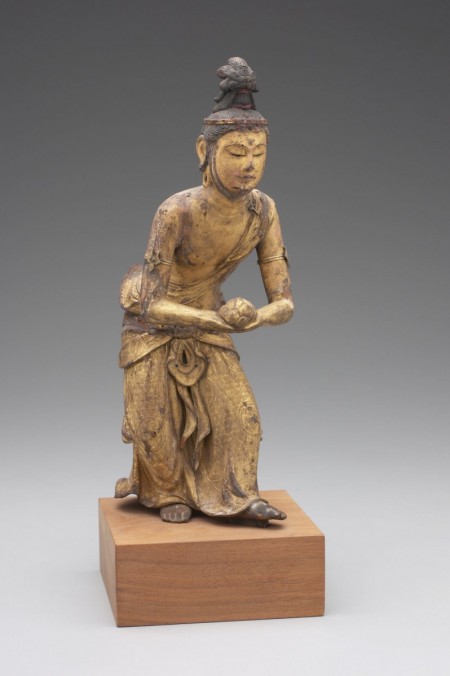Japan, Kamakura period, 14th century; hanging scroll, ink, color, gold, and cut gold on silk; image: 33 15/16 x 15 1/4 in., mount: 64 1/4 x 19 1/2 in., The Metropolitan Museum of Art, Purchase, Charles Wrightsman Gift, Joseph Pulitzer Bequest, Dodge, Pfeiffer and Rogers Funds, and funds from various donors, 1972, 1972.181, photo: www.metmuseum.org.
Kannon Holding a Lotus Seat
Japan, Edo period, traditionally attributed to the 13th century but probably 17th century; wood with gilt lacquer; object: H. 11 1/4 in., base: 1 15/16 x 4 15/16 x 4 15/16 in.; Yale University Art Gallery, Gift of Mr. and Mrs. William B. Jaffe, 1968.104.3.
Kannon, along with another bodhisattva named Seishi, frequently appears as an attendant to the Buddha in sculptural triads. Flanking a much larger Amida in the center, these figures can often be found in Pure Land Buddhist temples in Japan. As seen in this beautiful carved wooden sculpture, Kannon graciously bows to present the lotus pedestal to a worthy deceased. This iconography demonstrates a faith that death is not a dolorous end, but a glorious beginning, and that Kannon is a guide for the faithful to Sukhavati, known to the Japanese as Gokuraku.





